|
Occasionally, I take stock of my “wine cellar” and open a bottle or two that has been collecting dust. While perusing the various labels this morning, I stumbled upon a box of three wines hidden so well I had genuinely forgotten about it. It was an exciting find, which inspired me to open one of the bottles and pair it with the evening’s dinner. The wines were a gift from Giovanna Neri, owner of Col Di Lamo in Tuscany, specifically Montalcino! Montalcino is located amongst the rolling hills of Tuscany, home to one of Italy’s most renowned wines, Brunello Di Montalcino. Montalcino is a small wine region comprised of 60,000 acres of olive groves, forests, and farmland, of which 3,500 acres are devoted to wine vineyards. Made exclusively from the Sangiovese grape, (named ‘Brunello’ in Montalcino), Brunello Di Montalcino was awarded the first-ever DOCG designation (Denomination of Controlled and Guaranteed Origin) in 1980, the highest designation given under Italian wine law. Brunello di Montalcino is one of Italy’s most famous and distinguished wines. The skin of the Sangiovese grape is thick and tends to deliver fruit-forward wine with bright acidity and high tannins. The climate in Montalcino is warm and dry, typical Mediterranean weather. Vineyards are planted up to 500 meters in elevation, with north-facing slopes experiencing a cooler microclimate and more winds. In contrast, the southern and western-facing slopes are exposed to extreme sunlight and maritime breezes. The vines are planted in various soils such as limestone, clay, schist, volcanic soil, and galestro, which is schistous clay soil commonly found in most of Tuscany’s best vineyards. All these elements can contribute to the difference in quality, complexity, and character of the wine. Regulations require that Brunello di Montalcino age for a minimum of two years in oak wooden barrels and at least four months in bottle before release. The Riserva wine must age at least six months in bottle and is released a year later onto the market. And the wine can only be bottled in the location where it is produced. These wines have an aging potential of 30 years if stored properly and acquire more complexity the longer it ages. Col Di Lamo Col Di Lamo is an exclusive, all-female organic winery owned by winemaker Giovanna Neri and her daughter, Diletta. The winery was founded in 1994 after her daughter was born. The estate covers an area of approximately 80 hectares. Giovanna inherited her passion for wine and winemaking skills from her father, who passed away in 1991. Giovanna considers her wines “her creations” (children) and continually spreads her love and respect for the land and her products. It is a small production winery of quality and refinement. Here is an excerpt from my interview with Giovanna a few years ago. What inspired and motivated you to make this an all-female winery? Giovanna: For me, it was a natural process. My company is my creation, which I wanted for myself and for which I fought a lot in a world that was still very male-chauvinist, especially the wine industry. Compared to others, I had to prove triple to make it clear that a woman, completely alone and starting from scratch, could create wines of the highest quality. When I tell my story, I always say that I consider my company another daughter of mine. I gave it a name; I dedicated all the commitment, love, and dedication I have to it, as with my daughter Diletta. Where did you do your training to become a winemaker? Giovanna: I graduated with honors in law and embarked on a career as a lawyer. I felt, however, that this work, although gratifying, was not my way. So, at the age of 40, I decided to drastically change my life and have a part of the family business (it’s not so obvious if you are a woman). So, without any particular skills and the help of anyone, I threw myself body and soul into this fantastic adventure. There have been challenging times. The beginnings were really hard; I only had men around me, and no one believed I could do it. Luckily, they are the same men who now hold me in esteem. What is Diletta’s role in the company? Giovanna: Diletta helps me in communication. I believe a young vision is essential in a world that runs more and more on the Internet, especially social networks. Tell me about some of your challenges with winemaking and the industry. Giovanna: I strongly believe in wine and organic products in general. I was among the first to choose this type of cultivation in Montalcino, not without criticism. But I am convinced that it is the future. I feel like a guest in this land, and I have chosen to do this job precisely because I love the planet and want to respect and enhance it as much as possible, even for future generations. Although all three wines are highly rated, I chose to open the Brunello di Montalcino DOCG 2016 This wine is hand-harvested and fermented with native yeasts. It is aged 24 months in oak barrels and six months in steel tanks. Nose: Berries, floral, cherry, earth, tobacco, herbs, fig and baking spice. Palate: Rich, savory, and balanced with blackberry, dark plum, cloves, cinnamon, nice acidity, and a long finish of savory and sweet dark berries. Simply elegant! Alcohol: 14% SRP: $68 Pairing suggestions: Aged cheese, roasted meat and game, hearty soups, stews, mushroom risotto, and seared tuna. I paired this wine with a thick, hearty, nutritious Lentil Tomato Soup filled with carrots, celery, onion, and an assortment of herbs. If you would like the recipe for the soup, please email me. Contact information is below. Until next time,
Cheers! Penina To leave a comment or if you have an inquiry, please contact me at [email protected] It’s hard to believe that summer is almost over, and autumn is just around the corner. I’m looking forward to cooler weather, embracing fall foliage, and changing the menu to include hearty soups and stews. And I love pouring a decadent red wine to pair with autumn! So, let’s explore a few Tuscan wines from the San Felice Estate. The historic estate of San Felice is situated in Chianti Classico in the commune of Castelnuovo Berardenga, with vineyards throughout Tuscany’s three most prestigious wine-making areas. They have 150 hectares in Chianti Classico, 23 hectares in the municipality of Montalcino, and 15 hectares in Bolgheri. 80% of their vineyards are devoted to Sangiovese, which is at the heart of their production. Here is a selection of three eclectic wines from their Chianti Classico Estate. Pugnitello Toscana IGT 2020 Pugnitello is an ancient and indigenous Tuscan grape variety. Its name in Italian is “little fist,” which refers to the shape of its cluster. San Felice has collaborated with the universities of Florence and Pisa in their experimental vineyards for the past 20 years, focusing on saving this grape from extinction. This wine is 100% Pugnitello. It is aged 18-20 months in French oak barriques and another eight months in the bottle. Nose: Dark fruit, perfume, baking spice, and toasted oak. Palate: Aromas segue onto the palate with blackberry, plum, and vanilla. It is rich and smooth. Alcohol: 13.5% SRP: $57.99 Pairing suggestions: Hearty red-sauce pasta, roasted fowl, lamb, stews, mushroom risotto, and aged cheese. Vigorello Toscana IGT 2019 This wine was first produced in 1968 and became part of what is known as the Super Tuscans. This term is applied to a style of high-quality Tuscan red wines that might include a blend of indigenous and non-indigenous grapes. This wine is a blend of 35% Pugnitello, 30% Merlot, 30% Cabernet Sauvignon, and 5% Petit Verdot. It is aged in French oak barriques for 24 months and then eight months in the bottle. Nose: Red jam, forest floor, baking spice, and roasted coffee beans. Palate: Rich and beautifully structured with dark cherry, dark berry, earthy, hint of herbs, and vanilla lingering on a long finish. Alcohol: 13.5% SRP: $57.99 Pairing suggestions: Aged cheese, grilled or roasted meat, game, vegetable stew, Porcini risotto, or seared tuna. Poggio Rosso Chianti Classico Gran Selezione DOCG 2017 To quote San Felice, “Poggio Rosso is the fruit of a rigorous selection of Sangiovese grape variety from selected parcels of the same single vineyard, and today it represents the pinnacle of San Felice’s terroir. A wine of immense depth and superb elegance, produced in limited quantity and exclusively in outstanding vintages.” This wine is 100% Sangiovese and aged 20 months in French oak barrels and then 15 months in the bottle. Nose: Intoxicating floral notes, red cherry, berries, plum, and baking spice. Palate: Earthy, with smooth tannins, plum, red berries, a trace of herbs, and a hint of fennel. Vanilla and dark chocolate linger on a long and delicious spicy finish. Alcohol: 13.5% SRP: $65.99 Pairing suggestions: Aged cheese, roasted or grilled meat, game, stews, or hearty pasta dishes. Wine from the Bolgheri Estate Bell’Aja Bolgheri DOC Superiore 2020 The Bolgheri DOC runs parallel to the Tuscan coast, bordering the Ligurian Sea. Bell’Aja Vineyard is located in a natural amphitheater overlooking the sea and benefits from abundant sunshine and cooling sea breezes. Grapes for this wine are sourced from Le Sondraie, the oldest Merlot parcel of this vineyard. The wine is 95% Merlot and 5% Cabernet Sauvignon. It is aged 18 months in French oak barrels. Nose: Jammy fruit, cherry, licorice, cocoa, roasted coffee beans, and spice. Palate: Juicy dark berries, plum, spice, toast, and silky tannins balanced with acidity. A beautiful wine with a long and satisfying finish. Alcohol: 15.5% SRP: $68.99 Pairing suggestions: Pasta, roasted game, glazed duck, aged cheese, and stew. Wine from the Campogiovanni Estate Campogiovanni Brunello di Montalcino DOCG 2018 The grapes for this 100% Sangiovese wine are sourced from the Campogiovanni vineyards situated on the south quadrant of the Montalcino hill and considered an excellent area for the production of Brunello. San Felice has 23 hectares here, of which 14 hectares are Brunello vineyards. This wine is aged 36 months in French oak barrels and Slavonian oak, followed by twelve months in the bottle. It is one of the San Felice Estate’s flagship wines. Nose: Ripe red berries, dark jam, earthy, balsamic notes, baking spice, and a hint of leather.
Palate: Aromas segue onto the palate with plum, pepper, and a touch of herbs. It is beautifully structured and rich, with a long and elegant finish that begs for another sip. Alcohol: 14% SRP: $66 Pairing suggestions: Wild game, grilled meat and fowl, aged cheese, pasta, vegetable stew, and truffle risotto. All of these wines have aging potential and will surely please the palate! If you missed my “It’s Wine & Dine Time!” article featuring a San Felice wine and a recipe prepared by Borgo San Felice Executive Chef Juan Quintero, click on this link. http://thewineknitter.com/the-journal/its-wine-dine-time Until next time… Cheers! Penina To leave a comment or if you have an inquiry, please contact me at [email protected] It is always a treat to pour a glass of Brunello Di Montalcino, but especially lovely when you can share the moment (virtually) with Count Cinzano, owner of Col d’Orcia! In May 2022, I wrote an article about Col D’Orcia based on a tasting with the Count, which took place earlier that year. Here is an excerpt from the article to bring you up to speed about this most iconic winery and region. Gently rolling hills dominate the landscape of Tuscany, famous for its medieval towns, wine vineyards, striking cathedrals, and the birthplace of renowned artists such as Michelangelo, Botticelli, and Leonardo da Vinci. Amongst this beauty and history lies Montalcino, home to one of Italy’s most famous wines, Brunello Di Montalcino. The village of Montalcino sits high up on a hill with vineyards sloping down into the valley. Montalcino is a small wine region comprised of 60,000 acres of olive groves, forests, and farmland, of which 3500 acres are devoted to wine vineyards. Count Cinzano said that only 50% of the land in Montalcino is farmed, and of that, only 15% is planted with vineyards. There are roughly 250 wineries here that produce Brunello di Montalcino. Brunello di Montalcino was awarded the first-ever DOCG designation (Denomination of Controlled and Guaranteed Origin) in 1980, and it is considered one of Italy’s most famous and distinguished wines. DOCG is the highest designation given under the Italian wine law. Brunello di Montalcino is made exclusively from the Sangiovese grape (named ‘Brunello’ in Montalcino). The skin of the Sangiovese grape is thick and tends to deliver fruit-forward wine with bright acidity and high tannins. And, of course, climate, soil, and production play a big part in the wine’s outcome. The climate in Montalcino is warm and dry, typical Mediterranean weather. Vineyards are planted up to 500 meters in elevation, with north-facing slopes experiencing a cooler microclimate and more winds. In contrast, the southern and western-facing slopes are exposed to extreme sunlight and maritime breezes. The vines are planted in various soils such as limestone, clay, schist, volcanic soil, and galestro, which is schistous clay soil commonly found in most of Tuscany’s best vineyards. All these elements can contribute to the difference in quality, complexity, and character of the wine. Nestled amongst the hills in a setting worthy of a painting sits one of the original estates of Montalcino, Col D’Orcia, with a winemaking history that dates back to the 1700s. The estate’s name translates to “the hill overlooking the Orcia River” due to its position between the undulating hills of the Orcia River and Sant’Angelo in Colle. The estate was sold to the Cinzano family in 1973 and only had a few hectares of vineyards at the time of purchase. Count Francesco Marone Cinzano, who now owns and manages the estate, took over Col D’Orcia in 1992. He increased his father’s plantings from 70 hectares to 150+ hectares today. And 108 of those hectares are dedicated to Sangiovese. In 2010 they began the process of converting their vineyards to organic. By 2013 all wines were certified organic. And today, it is the largest certified organic vineyard in Tuscany and the third-largest owner of Brunello vineyards in Montalcino. The Count’s mission is to produce quality wines from these hills. He said, “Quality is the result of healthy fruit. We are not just winemakers; we are farmers. We grow grapes and practice biodiversity.” He pays his respect to mother nature and is always searching for excellence. His motivation to become organic was “not to change practices, but change the mindset of people by using a homeopathic and holistic approach; that is the greatest challenge to becoming organic. And the beauty of protecting this special environment is to pass it on to future generations.” As mentioned above, Brunello di Montalcino is made exclusively from the Sangiovese grape. DOCG Regulations require that Brunello di Montalcino age for a minimum of two years in oak wooden barrels and at least four months in bottle before release. The Riserva wine must age at least six months in bottle and is released a year later onto the market. And the wine can only be bottled in the location where it is produced. At my most recent tasting we enjoyed three exceptional wines, all made with 100% Sangiovese grapes. Brunello Di Montalcino DOCG 2017 Count Cinzano explained that due to a year of great drought and heat wave, there was a small harvest, and only this label was produced. The wine is aged three years in 25, 50, and 75 hl. Slavonian and French oak casks and a minimum of one year in bottle before release. (hl is a hectolitre and equal to 100 liters) Nose: Floral, herbs, ripe red fruit, plum, and cherry notes. Palate: Lush red fruit with dark cherry, plum, baking spice, herbs, and licorice. Medium tannins with fresh acidity and a long finish. Alcohol: 14.5% SRP: $63.99 Brunello Di Montalcino Nastagio DOCG 2016 The grapes for this wine were harvested from a single vineyard. Count Cinzano said this wine is the best vintage in recent history and is not produced every year. Nastagio is a five-hectare single vineyard planted in 2006 and composed entirely of Sangiovese clones specially selected from research work in partnership with the University of Florence. The wine is aged the first year in tonneaux (5 hl), then subsequent years in large “botti,” followed by an additional 12 months in bottle. Nose: Lush red fruit aromas, baking spice, tobacco, and a hint of earth. Palate: An expressive wine with balanced acidity and smooth tannins. Notes of plum, dark fruit, licorice, and spice with a playful, sweet, and savory finish lingering on the palate. Alcohol: 15% SRP: $89.99 Poggio Al Vento Brunello Di Montalcino Riserva DOCG 2015 The grapes for this wine are sourced from a single, seven-hectare vineyard planted in 1974 called Poggio al Vento, which means “windy hill.” The first vintage was produced in 1982. The sea winds and the special soils of marl and limestone influence the vines. This wine is only produced in the best vintages and is the icon of the estate. It is aged for three years in 25 and 75hl Slavonian and French oak barrels and then for three years refinement in bottle. This wine is the only Riserva the estate produces. Nose: Beautiful and intense berry notes with spice, earth, tobacco, floral, and minerality.
Palate: Complex and well-structured, aromas segue onto the palate with rich red and dark fruit, herbs, anise, and firm tannins. A very long and satisfying finish. A remarkable wine! Alcohol: 15% SRP: $172.99 Count Cinzano said, “These are wines made to serve with food. It is the concept of drinkability and enjoying wines with food.” Here are a few food pairing suggestions for the above wines: Aged cheese, meat dishes, stews, game, tomato-based pasta, grilled veggies, grilled portobello mushrooms, risotto with truffles, and dark chocolate for dessert. Until next time… Cheers! Penina To leave a comment or if you have an inquiry, please contact me at [email protected] Gently rolling hills dominate the landscape of Tuscany, famous for its medieval towns, wine vineyards, striking cathedrals, and the birthplace of renowned artists such as Michelangelo, Botticelli, and Leonardo da Vinci. Amongst this beauty and history lies Montalcino, home to one of Italy’s most renowned wines, Brunello Di Montalcino. The village of Montalcino sits high up on a hill with vineyards sloping down into the valley. Montalcino is a small wine region comprised of 60,000 acres of olive groves, forests, and farmland, of which 3500 acres are devoted to wine vineyards. There are roughly 250 wineries here that produce Brunello di Montalcino. Brunello di Montalcino was awarded the first-ever DOCG designation (Denomination of Controlled and Guaranteed Origin) in 1980, and it is considered one of Italy’s most famous and distinguished wines. DOCG is the highest designation given under the Italian wine law. Brunello di Montalcino is made exclusively from the Sangiovese grape, (named ‘Brunello’ in Montalcino). The skin of the Sangiovese grape is thick and tends to deliver fruit-forward wine with bright acidity and high tannins. Of course, climate, soil, and production play a big part in the wine’s outcome. The climate in Montalcino is warm and dry, typical Mediterranean weather. Vineyards are planted up to 500 meters in elevation, with north-facing slopes experiencing a cooler microclimate and more winds. In contrast, the southern and western facing slopes are exposed to extreme sunlight and maritime breezes. The vines are planted in various soils such as limestone, clay, schist, volcanic soil, and galestro, which is schistous clay soil commonly found in most of Tuscany’s best vineyards. All of these elements contribute to the difference in quality, complexity, and character of the wine. Nestled amongst the hills in a setting worthy of a painting sits one of the original estates of Montalcino, Col D’Orcia, with a winemaking history that dates back to the 1700s. The estate’s name translates to “the hill overlooking the Orcia River” due to its position between the undulating hills of the Orcia River and Sant’Angelo in Colle. The estate was sold to the Cinzano family in 1973. The estate only had a few hectares of vineyards at the time of purchase. Count Francesco Marone Cinzano, who now owns and manages the estate, took over Col D’Orcia in 1992. He increased his father’s plantings from 70 hectares to 150+ hectares today. And 108 of those hectares are dedicated to Sangiovese. In 2010 they began the process of converting their vineyards to organic. By 2013 all wines were certified organic. And today, it is the largest certified organic vineyard in Tuscany and the third-largest owner of Brunello vineyards in Montalcino. The Count’s mission is to produce quality wines from these hills. He said, “Quality is the result of healthy fruit. We are not just winemakers; we are farmers. We grow grapes and practice biodiversity.” He pays his respect to mother nature and is always searching for excellence. His motivation to become organic was “not to change practices, but change the mindset of people by using a homeopathic and holistic approach; that is the greatest challenge to becoming organic. And the beauty of protecting this special environment is to pass it on to future generations.” As mentioned above, Brunello di Montalcino is made exclusively from the Sangiovese grape. DOCG Regulations require that Brunello di Montalcino age for a minimum of two years in oak wooden barrels and at least four months in bottle before release. The Riserva wine must age at least six months in bottle and is released a year later onto the market. And, the wine can only be bottled in the location where it is produced. I had the opportunity to taste the following wines with Count Cinzano. In addition to the five-star vintages of Brunello Di Montalcino, he included a bottle of Cabernet Sauvignon, another great vintage. All three wines are produced entirely with organically grown grapes farmed on the Col d’Orcia estate and bottled on location. Brunello Di Montalcino DOCG 2016 This is a blend of all the Sangiovese vineyards on the estate. The wine is aged three years in 25, 50, and 75 hl. Slavonian and French oak casks and a minimum of one year in bottle before release. (hl is a hectolitre and equal to 100 liters,) Nose: Floral, herbs, ripe red fruit, berries, and cherry notes. Palate: Lush red fruit with cherry, plum, spice, herbs, and licorice. Medium tannins with fresh acidity and a long finish. Alcohol: 14.5% SRP: $59.99 Poggio Al Vento Brunello Di Montalcino Riserva DOCG 2013 The grapes for this wine are sourced from a single vineyard planted in 1974 comprised of seven hectares called Poggio al Vento, which means “windy hill.” The vines are influenced by the sea winds and the special soils of marl and limestone. This wine is only produced in the best vintages and is the icon of the estate. The Count said that the 2013 vintage was small but exceptional. The wine was aged for three years in 25 and 75hl in Slavonian and French oak barrels and for three years refinement in bottle. Nose: Beautiful berry notes with spice, earth, and dark chocolate. Palate: Complex and well-structured with rich fruit, herbs, anise, and edgy tannins. The Count said, “The next ten years will show softness of tannins.” Alcohol: 14.5% SRP: $162.00 Olmaia Cabernet Sauvignon Sant’Antimo DOC 2015 The grapes for this 100% Cabernet Sauvignon come from a single vineyard, Olmaia, planted in 2005. The Count’s father originally planted Cabernet Sauvignon in 1984 on the hills of Montalcino, and the first harvest was in 1989. Sadly, his father passed away before the first vintage was produced. The Count remarked, “This wine expresses how special Montalcino is.” The wine is aged 18 months in new French oak barriques and a small portion in American barrels, then another eight months in bottle. Nose: Dark fruit, herbs, spice.
Palate: Rich and decadent with blackberries, black cherry, plum, herbs, spice, and chewy tannins (that will soften with aging.) A long and beautiful finish with notes of vanilla lingering. Alcohol: 14.5% SRP: $68.99 Count Cinzano said, “These are wines made to serve with food. It is the concept of drinkability and enjoying wines with food.” Here are some food pairing suggestions for the above wines: Aged cheese, meat dishes, stews, game, tomato-based pasta, grilled veggies, grilled portobello mushrooms, risotto with truffles, and dark chocolate for dessert. Until next time… Cheers and Buon appetito! Penina This article was originally published on Santé Magazine To leave a comment or if you have an inquiry, please contact me at [email protected] Located amongst the rolling hills of Tuscany lies Montalcino, home to one of Italy’s most renowned wines, Brunello Di Montalcino. Made exclusively from the Sangiovese grape, this wine was awarded the first-ever DOCG designation (Denomination of Controlled and Guaranteed Origin) in 1980. It is the highest designation given under Italian wine law. With a history that dates back to the Etruscans, winemaking has always been part of the culture here, including a male-dominated industry burdened by discrimination and habit. However, female winery owners and winemakers have taken Montalcino by storm and transformed and turned the tides to make a place for women in the wine industry. Let me introduce you to three of these dynamic and revolutionary women of Brunello Di Montalcino, who I had the opportunity to chat with recently. DONATELLA CINELLI COLOMBINI With an estate and family history of winemaking dating back to the 16th century, owner Donatella Colombini created Casato Prime Donne in 1998. It is the first winery in Italy with an all-female staff, borne out of the desire and need to reduce discrimination and show that “muscle” is not the only ingredient required to produce wine. What circumstances led you to create an all-female staff? Donatella: To be truthful, it happened by chance. I am the descendant of a historic family of Brunello producers. My vineyards are on land that my ancestors began cultivating over 400 years ago. In 1998 I left the family estate to create a new project that included two properties that needed renovation: Casato in Montalcino and Fattoria del Colle in southern Chianti. To help me, my mother gave me some wine in a barrel to begin my own production of Brunello. I needed a cellar master to take care of my wines, so I called the nearest oenology school and asked for the name of a good student. They told me that they were all booked. When I called back and asked for a female student, the reply was, “We have many, as none of the good wineries want them.” I realized that discrimination was so widespread that it had become “normal,” so I decided to change the situation. From this incident came the idea of creating the “Prime Donne” Project and becoming the first winery in Italy to be staffed only by women. It demonstrates that the production of fine wines does not require muscles, just talent, and intelligence. Now we have three female winemakers, and we export to 39 nations around the world. The wine critics’ ratings are excellent, and sales are going very well. In the beginning, it was difficult, but we did it. Part of the Prime Donne project is also the Brunello Prime Donne chosen by a panel of four female wine tasters, the Prime Donne award (given to women who change the female model), and a hiking trail with quotes from the winners. You are a pioneer and inspiration to women. If you could tell the future generations of women winemakers one thing, what would it be? Donatella: I would tell them to have more courage and to learn something new every day of their life. Women are much better than they think they are, but they must have more faith in their talent. Often women renounce because they are scared of not succeeding. They renounce so they can dedicate time to the family. But this is a mistake; they will be better professionals, mothers, and wives if they accept the challenges life puts in their way. If they do not even try, then they have already lost. In the same way, it is wrong to search for professional success at any cost. “Those who go alone walk more quickly, but those who walk with others go much further,” says an old proverb to which I would like to add a phrase: Those who help others go forward will never be alone and will have given meaning to their life. GIOVANNA CIACCI Giovanna comes from a long line of winemakers with family roots that go back to 1850 when the family estate Tenuta di Sesta was founded. At that time, the family was immersed in cultivating grapes, olives, and grain. It wasn’t until 1966 that Giuseppe Ciacci bottled the estate’s first Brunello di Montalcino. In 1994 the original estate was divided among family members. Giovanna took her share of land and in 1995 created Tenuta di Collosorbo. Today, she and both of her daughters run the 30-hectare winery. Giovanna manages the general administration. Her daughter Laura works as both an oenologist and a viticulturist. Her other daughter Lucia is the agronomist and also responsible for marketing. Tell me about Tenuta di Collosorbo. Giovanna: Tenuta di Collosorbo comes from one of the oldest estates of Montalcino, owned by our family since 1850. After the death of Giuseppe Ciacci, his sons decided to split the estate. It was 1995, and I gave a new name to the estate, Tenuta di Collosorbo. I have always been focused on elegance, quality, and traditions. In 2008 my daughters Laura and Lucia started working full time at the estate, making it one of the first female estates in Montalcino. Many children that grow up in a family business tend to go off and do their “own thing”. Did your daughters always know that they wanted to be part of the family business? Giovanna: Laura and Lucia grew up surrounded by the taste and smell of the wine. When they were young, before university, they were torn between their roots, estate, passion, and family, and their desire to do something different with their powers. Lucia thought of becoming a doctor, and Laura wanted to become a veterinarian. But in the end, their passion for the estate, their roots, countryside, and wine won. And both of them decided to study for it. What challenges do you and your daughters face as women in this industry? Giovanna: The wine business has been mainly a male world until 15 years ago. In the beginning, it wasn’t easy to demonstrate our competence and our power, both inside and outside of the estate. But now, after 26 years, we are really proud of our job and of the teamwork that we have created inside Collosorbo. GIOVANNA NERI Col Di Lamo is an exclusive, all-female organic winery owned by Giovanna and her daughter, Diletta. It was founded in 1994 after her daughter was born. The estate covers an area of approximately 80 hectares. Giovanna inherited her passion for wine and winemaking skills from her father, who passed away in 1991. However, she took a detour before returning to her roots. Giovanna considers her wines “her creations” (children) and continually spreads her love and respect for the land and her products. It is a small production winery of quality and refinement. What inspired and motivated you to make this an all-female winery?
Giovanna: For me, it was a natural process. My company is my creation, which I wanted for myself, and for which I fought a lot in a world that was still very male chauvinist, especially the wine industry. I think I had to prove triple, compared to others, to make it clear that a woman, completely alone and starting from scratch, could create wines of the highest quality. When I tell my story, I always say that I consider my company another daughter of mine. I gave it a name; I dedicated all the commitment, love, and dedication I have to it, as with my daughter Diletta. Where did you do your training to become a winemaker? Giovanna: I graduated with honors in law and had embarked on a career as a lawyer. I felt, however, that this work, although gratifying, was not my way. So at the age of 40, I decided to drastically change my life and have a part of the family business (it’s not so obvious if you are a woman). So, without any particular skills and the help of anyone, I threw myself body and soul into this fantastic adventure. There have been very difficult times. The beginnings were really hard, I only had men around me, and no one believed I could do it. Luckily they are the same ones who now hold me in esteem. What is Diletta’s role in the company? Giovanna: Diletta helps me in communication. I believe that a young vision is essential in a world that runs more and more on the Internet, especially social networks. Tell me about some of your challenges with winemaking and the industry. Giovanna: I strongly believe in wine and organic products in general. I was among the first to choose this type of cultivation in Montalcino, not without criticism. But I am convinced that it is the future. I feel like a guest in this land, and I have chosen to do this job precisely because I love the planet, and I want to respect and enhance it as much as possible, even for future generations. All of these amazing women are members of Il Consorzio del Vino Brunello di Montalcino, founded in 1967. Its mission is to safeguard its product and accentuate the best qualities of Brunello wines. It is a free association comprised of 203 producers representing small and large wineries, including 22 producers outside the Consorzio. As part of Il Consorzio’s initiative, Finally Brunello will be taking place in New York from June 14th through June 20th. It is an excellent opportunity to taste Brunello wine from 56 wineries paired with food from 38 participating restaurants presenting a prix fixe menu. To learn more about this event, visit https://www.finallybrunello.com/ A note on the Feature Photo: The work of art depicted in this photo is called Points of View and is located on the hiking trail of the Prime Donne connected to Casato Prime Donne Award. Until then… Cheers! Penny This story was originally published on Santé Magazine. To leave a comment or if you have an inquiry, please contact me at [email protected] The other day I had the opportunity to attend a seminar and walk around tasting of many impressive Brunello wines from the Consortium of The Brunello of Montalcino Wine. Although the emphasis was on the 2013 vintage, I also sampled wines dating from 2010 through 2015. The consortium was founded in 1967 and started with a membership of 20 producers. Today there are more than 200 members of which 31 estates were represented at this event. Montalcino is located in the Tuscany wine region of Italy. Montalcino is a small wine region with 3500 acres of vineyards and roughly 250 wineries producing Brunello di Montalcino. Brunello di Montalcino was awarded the first ever DOCG designation in 1980 and is considered one of Italy’s most famous and distinguished wines. DOCG stands for Denomination of Controlled and Guaranteed Origin and it is the highest designation given under Italian wine law. 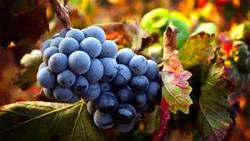 Brunello di Montalcino wine is made exclusively with 100% Sangiovese grapes (named ‘Brunello’ in Montalcino). The skin of the Sangiovese grape is thick and tends to deliver a wine that is fruit forward with bright acidity and high tannins. Of course climate, soil and production play a big part in the wine’s outcome. The village of Montalcino sits high up on a hill with the vineyards sloping downward into the valley. The climate in Montalcino is warm and dry, typical Mediterranean weather. Vineyards are planted up to 500 meters in elevation with north facing slopes experiencing a cooler microclimate and more winds, while the southern and western facing slopes are exposed to extreme sunlight and maritime breezes. The vines are planted in a variety of soils such as limestone, clay, schist, volcanic soil and galestro, all of which contribute to the difference in quality, complexity and character of the wine. DOCG Regulations require that Brunello di Montalcino age for 2 years in oak casks, 4 months in bottle (6 months for the Riserva) and bottling must take place in the production area. Brunello di Montalcino must be aged for a minimum of 5 years (6 years for Riserva) prior to release for sale. Most of the 2013 vintages I tasted were quite approachable and gentler than the more aggressive and bold Brunello I’ve had in the past. My palate was treated to a gamut of flavors such as dark berries, cherry, aromatic wood, anise, leather and spice. “Lush fruit, round tannins, quite aromatic, good structure and high acidity” seemed to be the theme for most of the 2013s with variations according to soil and plot locations. Brunello wines are impressive and I look forward to trying the 2013 vintage again in about five years!
Montalcino wines also include Rosso di Montalcino DOC, Moscadello di Montalcino DOC and Sant’Antimo DOC. I will be exploring these wines in another post. If you like collecting wines, do yourself a favor and pick a bottle or two of Brunello and tuck them away to enjoy at a future date. The aging potential of these wines is 8 to 25 years. Cheers! Penina To leave a comment or if you have an inquiry, please contact me at [email protected] 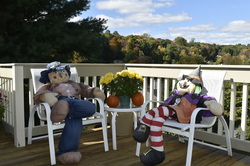 The weather has been beautiful for the past few days and I am enjoying the subtle changes of the foliage around me. And so are Ethel and Fred, long time friends that appear on my doorstep every fall season.  Being in a “fall” mood, I wanted to make my famous pumpkin muffins yesterday. But as usual, life got in the way. Perhaps I can make a batch in the next day or so. 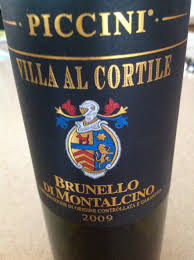 To celebrate my victorious “win” in court yesterday over an undeserved ticket, a friend and I went out to dinner. We dined at a local restaurant specializing in southern Italian cuisine. In addition to a superb dining experience, we drank a very nice wine. It was a 2009 Piccini Villa al Cortile Brunello di Montalcino, DOCG. The wine was 100% Sangiovese grape and dark ruby in color. A mosaic of aromas included blackberry, dark cherry, spices and herbs. The palate delivered licorice, dark berry, mushrooms and a hint of vanilla. As the wine opened, the flavors got more intense with a touch of tobacco on the finish. I found this to be a bold wine with round tannins. The wine was aged in oak for 26 months and is 14% alcohol. The Piccini family has been producing wines since 1882. http://www.tenutepiccini.it Enjoy this lovely Thursday!
Cheers! Penina 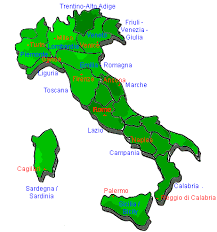 Bel Giorno! Yesterday I began my review of the Kobrand Tour d’Italia 2015 eight-city tour of Italy. We explored some wonderful vineyards and tasted interesting wines. I now have three more stops to make. 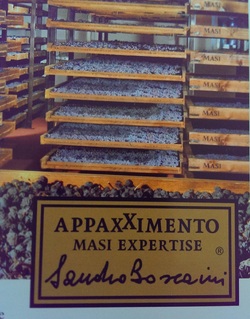 I made my way to Veneto, where Tony Apostolakos, the U.S. Director of Masi Agricola was waiting to guide me through a tasting of Amarone. It is interesting to note that Sandro Boscaini, the owner of Masi, is referred to as “ Mr. Amarone” due to the unique crafting of his wines. He uses the appassimento method to concentrate aromas and flavors in wine. The Appaxximento symbol can be found on his labels guaranteeing the authenticity and quality of Masi Wine. I’ll highlight a few of the wines I tasted. The 2011 Costasera Amarone was full-bodied with cherry, plum and spices. The 2008 Vaio Armaron Amarone, aged in cherry wood casks for four months, was amazing. The aroma and flavor of cherries, spices and fruit lingered on the palate. Before I departed I was treated to a taste of 1999 Amarone della Valpolicella Classico. It had a beautiful bouquet of fruit and earth, with dark fruit and spice on the palate. http://www.masi.it 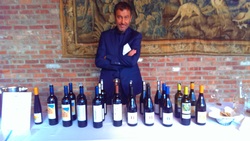 The next stop was Piedmont to visit Michele Chiarlo, a family owned and run winery. Their grape varieties are Moscato, Barbera, Nebbiolo and Cortese. It is interesting to note that the wines are never blended. I tried a 2011 Reyna, Barbaresco, 100% Nebbiolo. It was flowing with dark fruit, spice and licorice. The 2007 Cannubi Barolo, also 100% Nebbiolo was full-bodied with notes of licorice, spice and firm tannins. Although I didn’t have a chance to taste the light sparkling wine Nivole, Moscato d’Asti, 100% Moscato, I was told the wine is so delicate that, Michele Chiarlo named it Nivole after the Piedmontese word for clouds. http://www.michelechiarlo.it/ My final destination was back in Tuscany with Ambrogio E Giovanni Folonari. The Folonari family began their wine making in the 1700’s and are considered among Tuscany’s top winemakers. Their portfolio is vast and with the array of bottles set before me, I knew that I didn’t have time to sample them all. So I asked Claudio Andreani to guide me through a few of the wines. We started with the 2010 Tenuta La Fuga Brunello di Montalcino. It was full-bodied and robust with dark berry and tobacco. The 2012 Tenute del Cabreo Il Borgo was smooth and earthy. Tannins were a bit chewy. Next was Tenuta di Nozzole Chianti Classico Riserva, 100% Sangiovese. Aged for 16 months in Slavonian oak vats, the wine was earthy with firm tannins. My last taste was a 1997 Tenuta Campo al Mare, Rosso, Bolgheri. This wonderful Bordeaux-style blend was rich in flavor. Dark fruit, licorice and a long smooth finish completed my day of tasting. http://tenutefolonari.com
Have a great Friday! Cheers! Penina 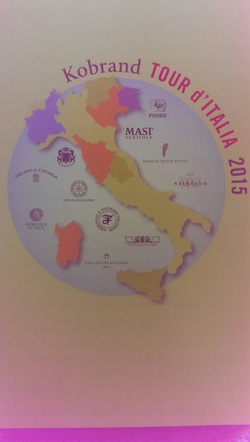 Tuesday was a beautiful day and what better way to spend it than touring Italy. Our kick off point was the trendy Bowery Hotel in NYC. This small boutique hotel located in the East Village was the perfect setting for the Kobrand Tour d’ Italia 2015 wine event. 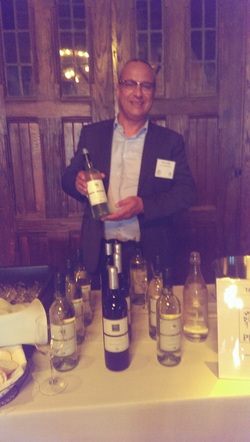 The first stop on this eight-city tour was Risano and Spessa di Capriva in the Friuli Grave and Collio Goriziano D.O.C. zones. I met with Roberto Pighin, the owner of Fernando Pighin & Figli. He has been part of the family winery since he was a child. He is passionate about his wine and took great pride in discussing the production of the Pinot Grigio and Sauvignon Blanc. The Pinot Grigio Friuli Grave was sweet with fruit and quite lively, as compared to the Pinot Grigio Collio that was more intense with citrus and less fruit. The Sauvignon Blanc Friuli Grave was grassy, mild and very pleasant. http://www.pighin.com 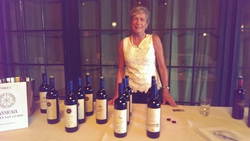 My next stop was the estate of Tenuta San Guido located in the D.O.C. Bolgheri in Tuscany. Colleen McKettrick, the Brand Ambassador, greeted me. It is no secret that Sassicaia is a favorite of mine. And, it is also the first Super Tuscan to be released in 1968. So it was with great pleasure that I tasted some excellent wines. The 2012 Sassicaia was rich with dark fruit, spices and was quite robust. Colleen poured me a special taste of the 2004 Guidalberto and 2006 Sassicaia that were pure velvet! The 2013 Guidalberto Toscana IGT is a blend of Cabernet Sauvignon and Merlot. It was well-balanced with dark fruit and a velvet texture. The 2013 Le Difese Toscana IGT is a mini Super Tuscan made with Cabernet Sauvignon and Sangiovese, sharing a pedigree with Sassicaia. The fruit is picked from younger vines and is easy to drink. http://www.tenutasanguido.com Agricola Punica, founded in 2002, is located in Sardinia, a large island in the Mediterranean Sea. Sebastiano Rosa (Principle) and his son led me on a guided tour of their wines. We started with the Samas, made with Vermentino and Chardonnay grapes. It was quite refreshing and light with lots of citrus. I also tried Montessu, 2013 and Barrua, 2012, both made with the Carignano grape which is one of three main grapes planted in Sardinia. The Montessu was layered with fruit & spices and called “Super Sardinian” The Barrua was more robust and full-bodied. I’ll have to come back to this island! http://www.agripunica.it/ I found myself back in Tuscany again tasting wines from Tenuta Sette Ponti owned by Giovanna Moretti and her brother Antonio Moretti who also own Feudo Maccari in Sicily. Their Tuscan wines are eclectic and there were many to sample. The newest wine is Vigna del Impero made with 100% Sangiovese. Planted in 1935, Imperno is one of Tuscany’s oldest vineyards. The wine was rich with fruit, spice and medium tannins. I made a quick stop in Sicily to taste Grillo, Sicilia IGP 2014. Aged in steel tanks, this full-bodied wine was floral scented, with citrus and stone fruit on the palate. Did you know that the Grillo grape is most famous for its role in making Marsala wines? http://www.tenutasetteponti.it Tenute Silvio Nardi, located in Tuscany is owned and operated by Emilia Nardi. They are one of the founding families of the Brunello Consortium. The wines are made with 100% Sangiovese. I tasted the 2005 and 2010 Brunello. The 2005 Brunello was high in tannins and more “chewy”. I preferred the 2010 Brunello having softer tannins that allowed the fruit, licorice and spices to dominate. I then tried the 2006 and 2010 Manachiara Brunello. Although the 2006 was bright and robust, the 2010 was smoother and more complex. http://www.tenutenardi.com So, this is where the first leg of my trip ends. Tomorrow I will continue on to Veneto, Piedmont and then back to Tuscany. Until then… 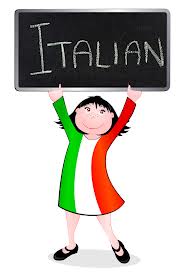 Saluti! Penina 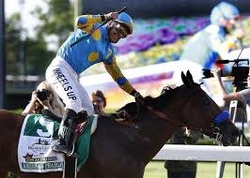 Let me start with a big shout out to American Pharoah, the new Triple Crown Winner! It was an amazing race! We were all on the edge of our seats throughout the short race.  It turned my small get together into a full-blown celebration! We opened bottles of wine and grilled lots of food. I will give my thoughts on the wine we drank during the week. 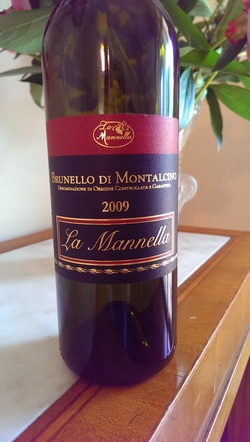 As promised, I want to share my thoughts on the 2009 Brunello Di Montalcino from the La Mannella Estate. The wine is made from 100% Sangiovese grapes and aged in oak barrels for 40 months. The color was inky purple with aromas of cherry, licorice and spices. Lots of dark fruit on the palate with hints of clove, vanilla and oak gave way to a lengthy finish. Soft tannins and full-bodied…perfect! http://www.lamannella.it Enjoy your Sunday!
Cheers! Penina |
Categories
All
|

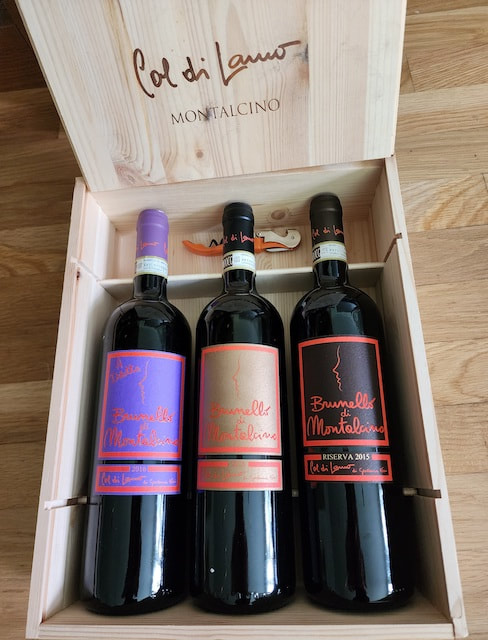
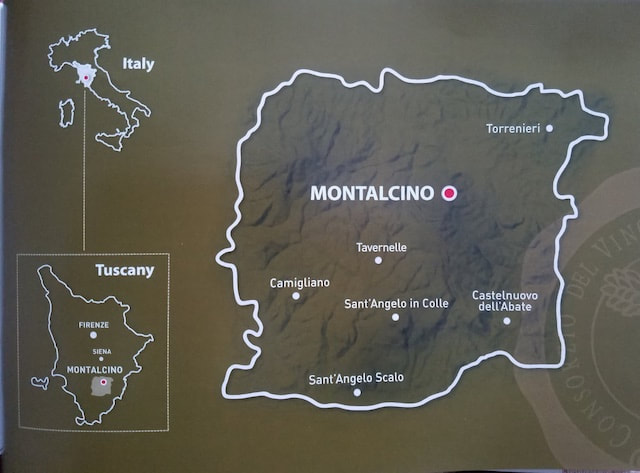
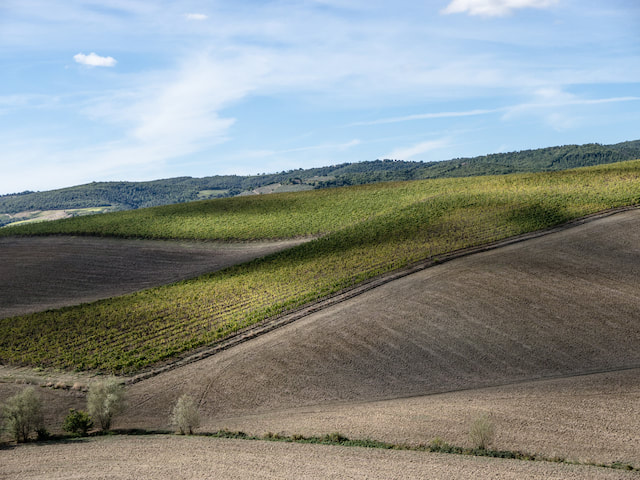
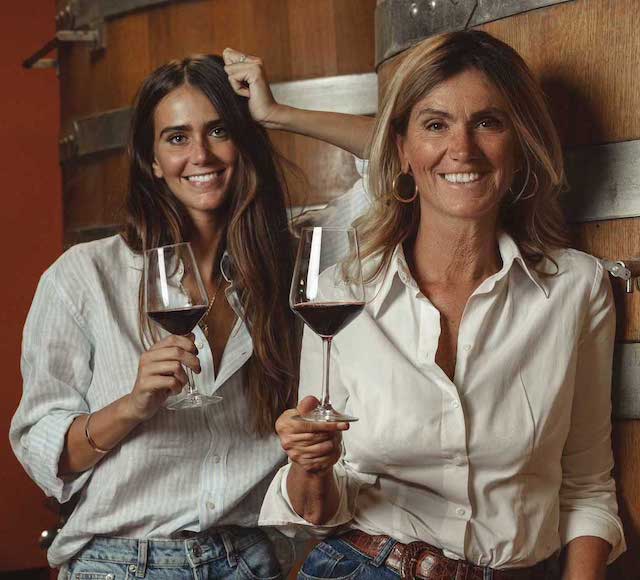
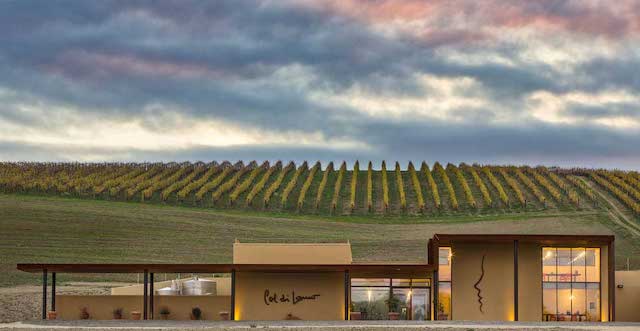
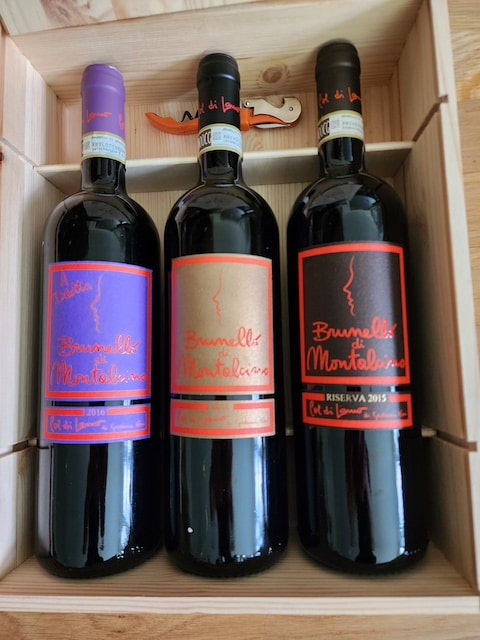
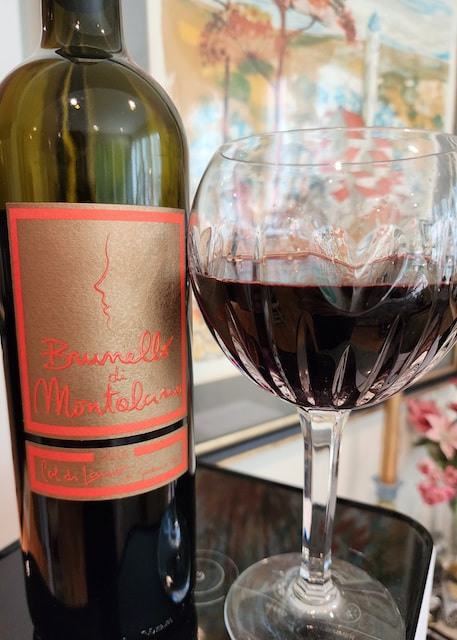
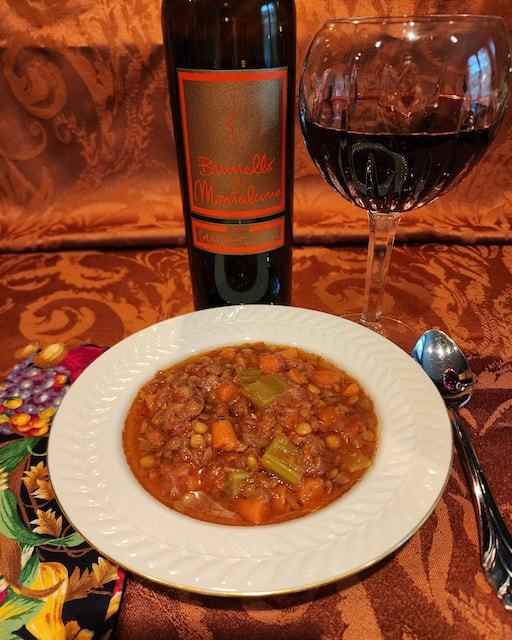
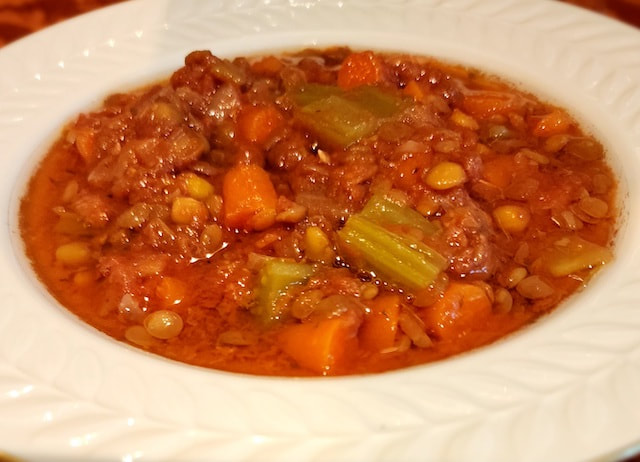
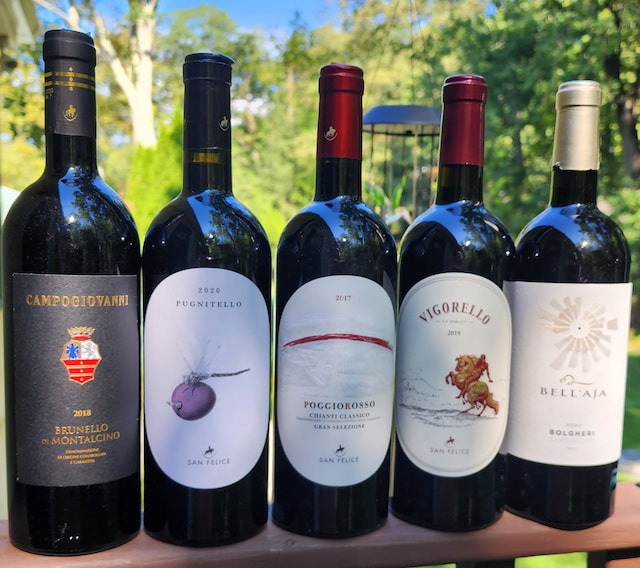

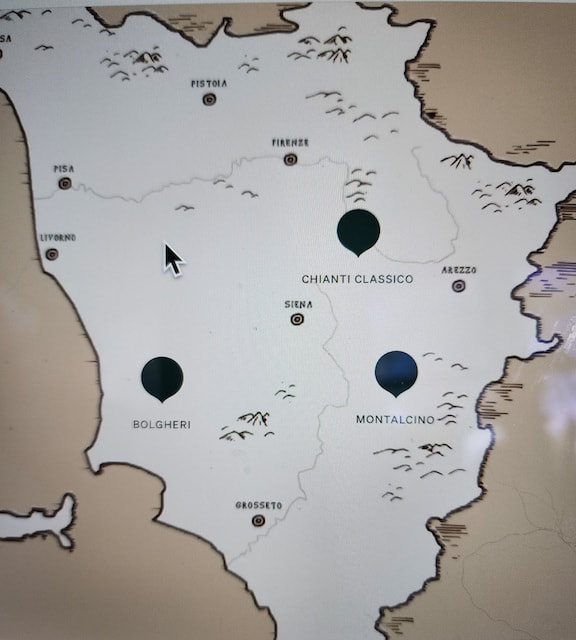
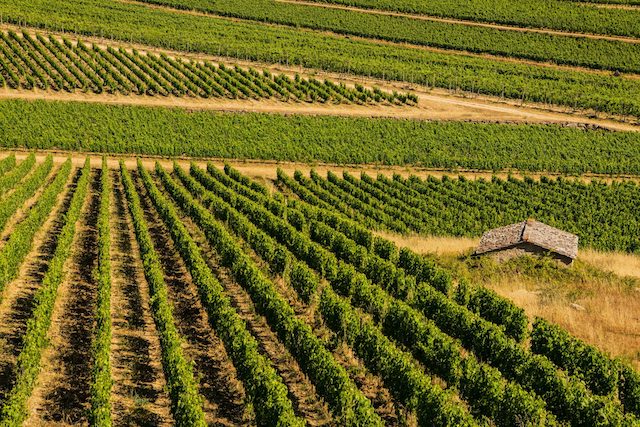
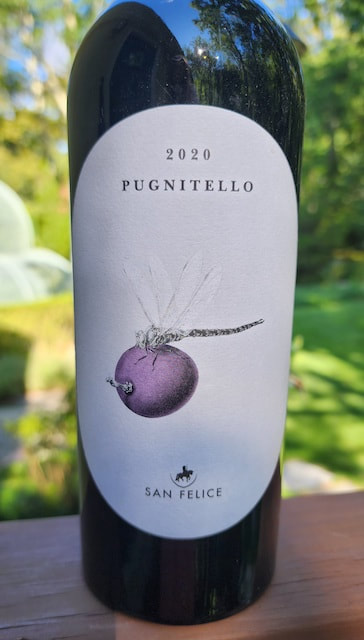
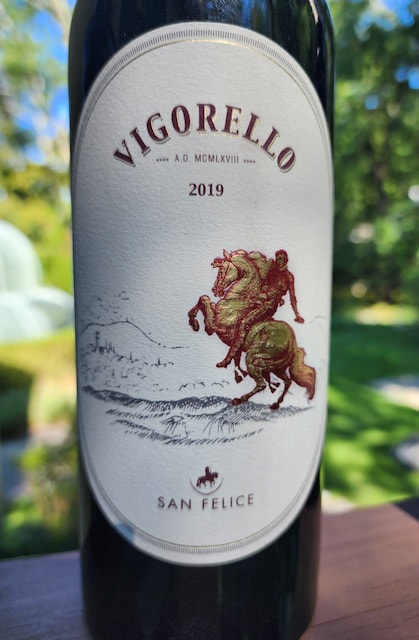
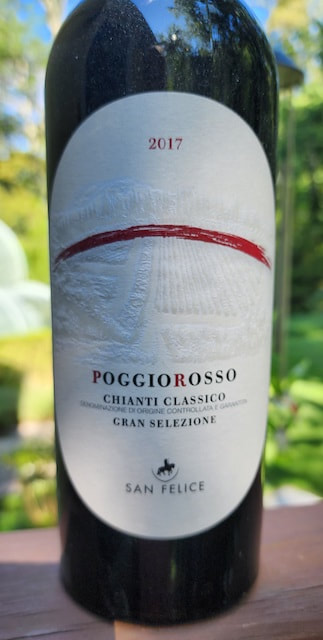
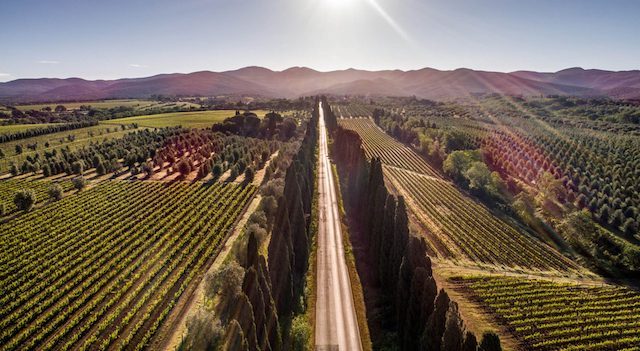
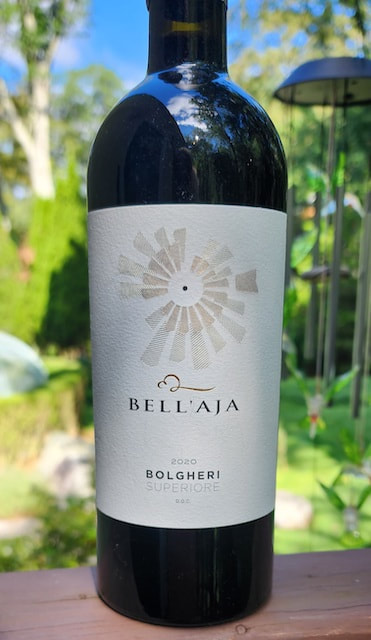
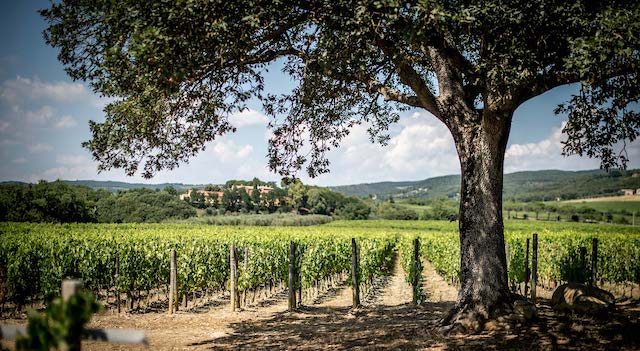
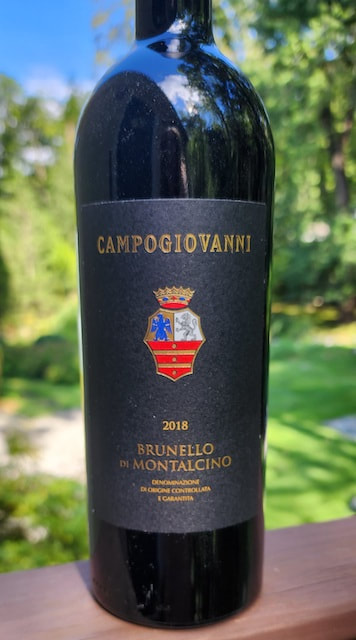
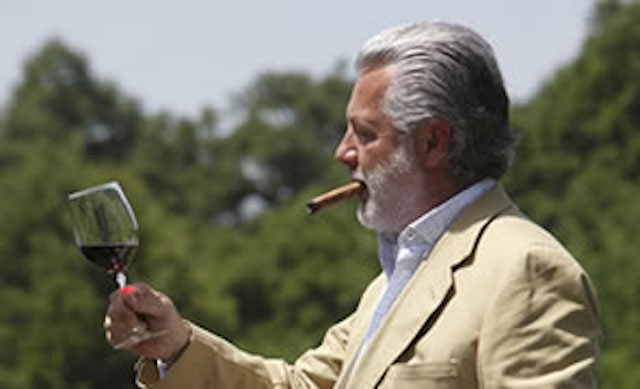
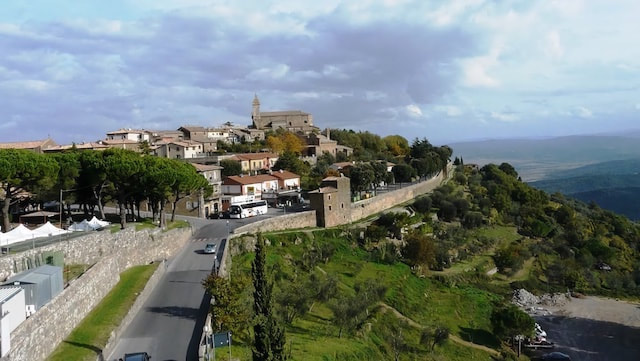
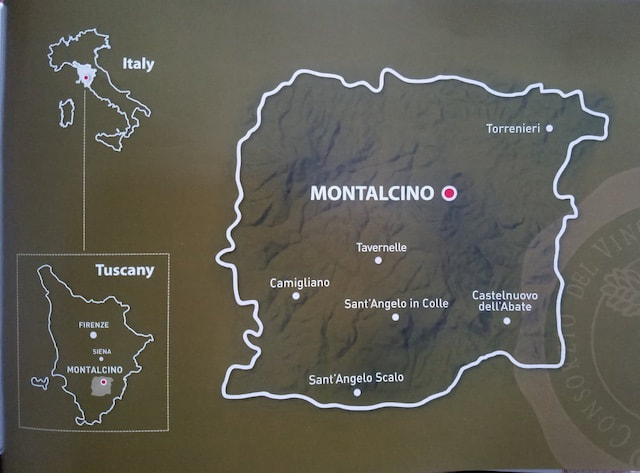
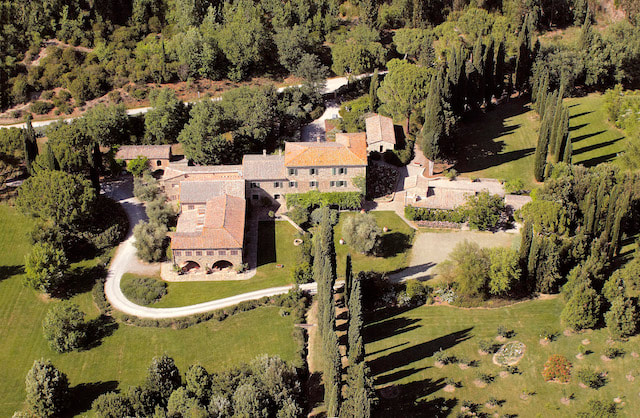
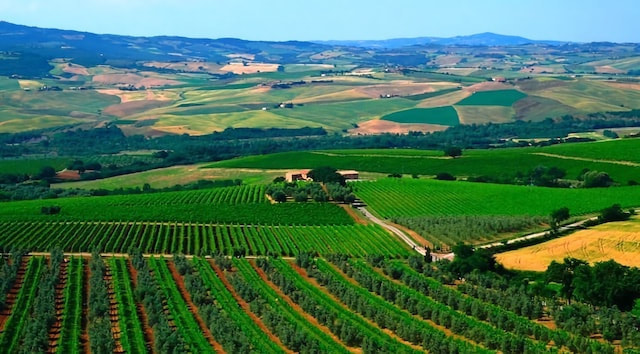
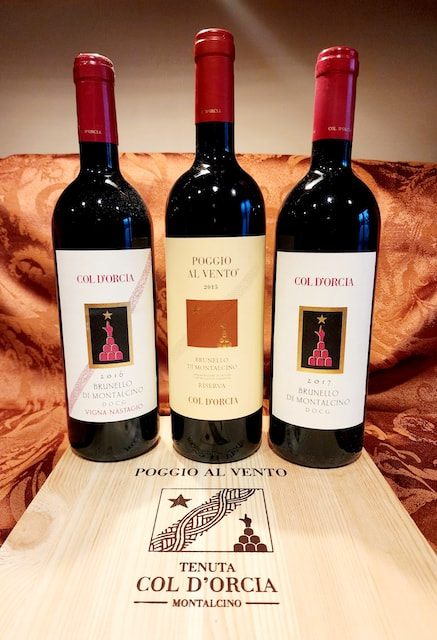
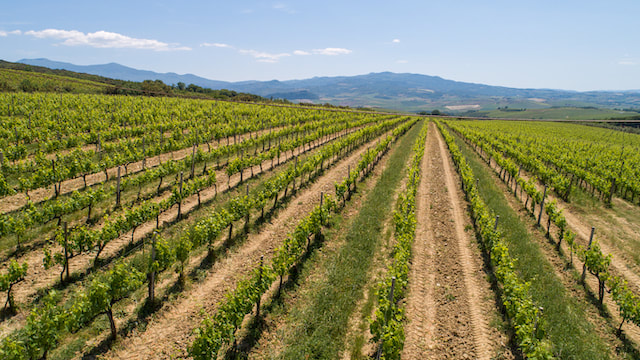
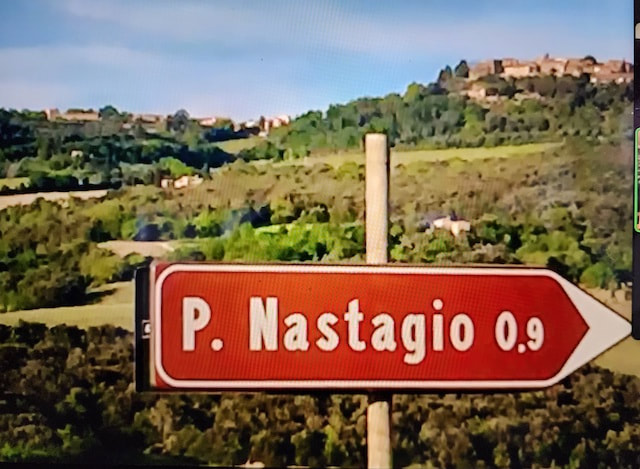
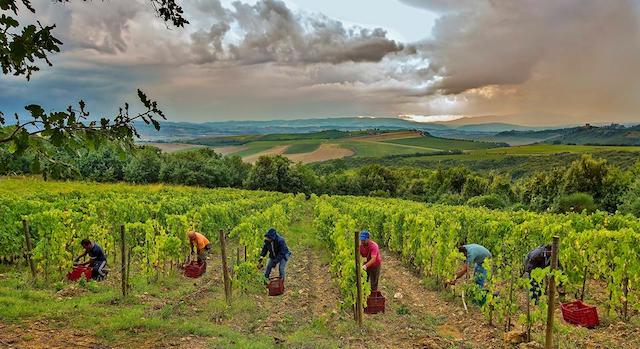
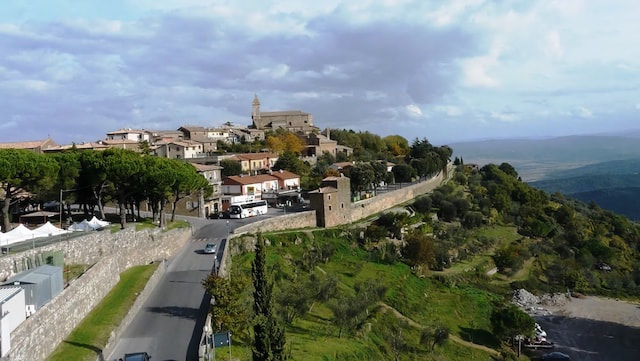
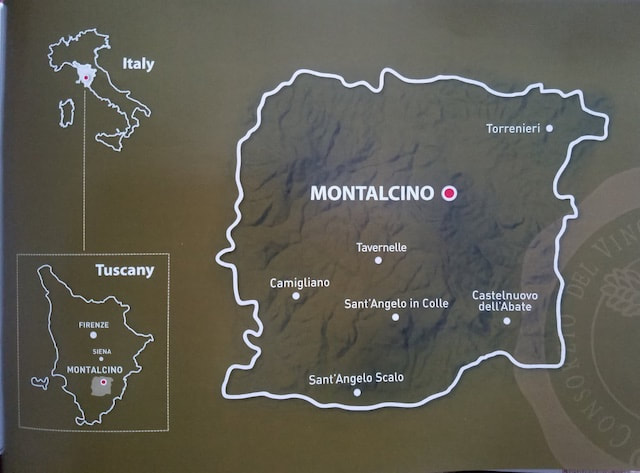
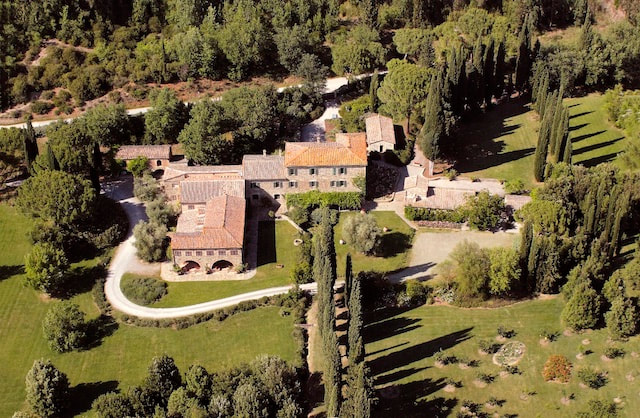
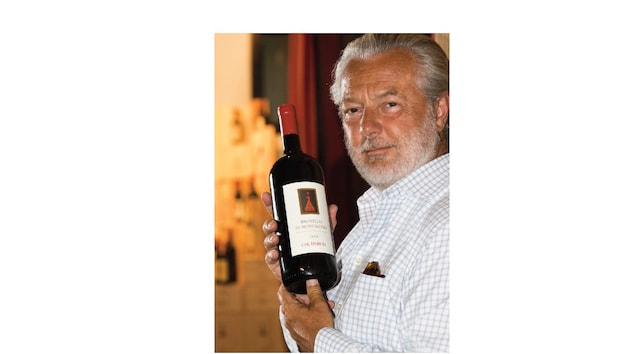
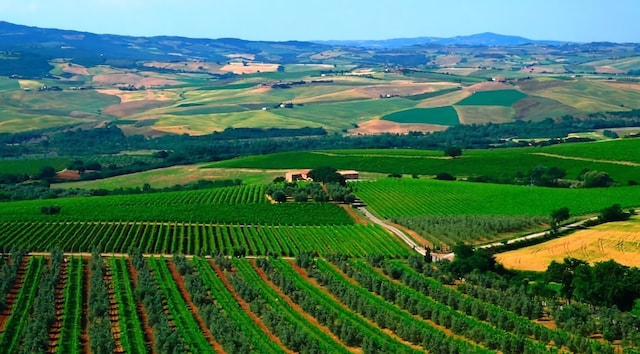
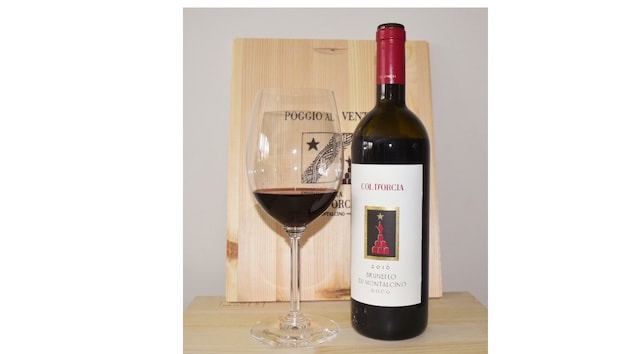
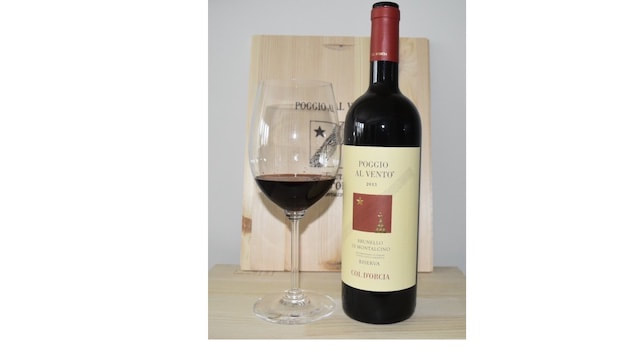
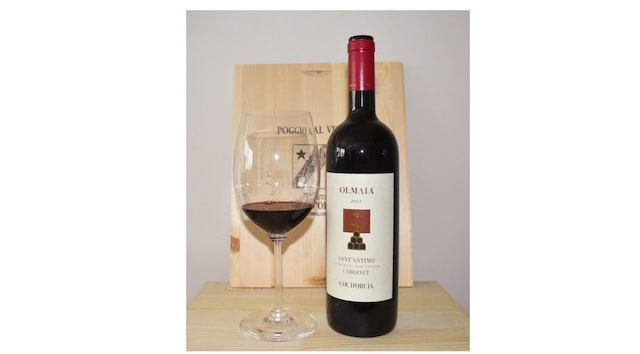
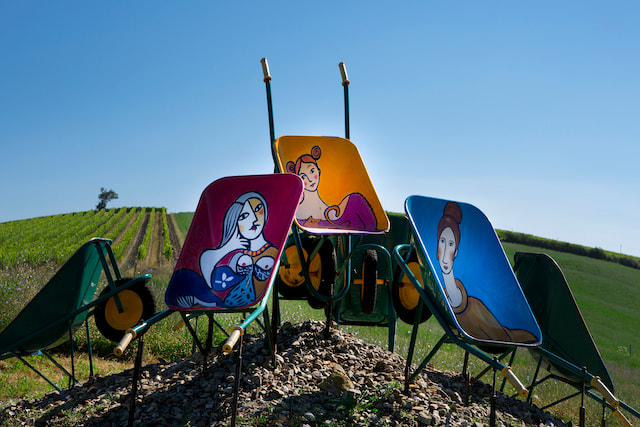
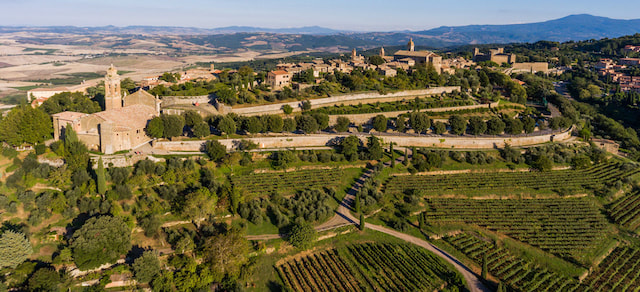
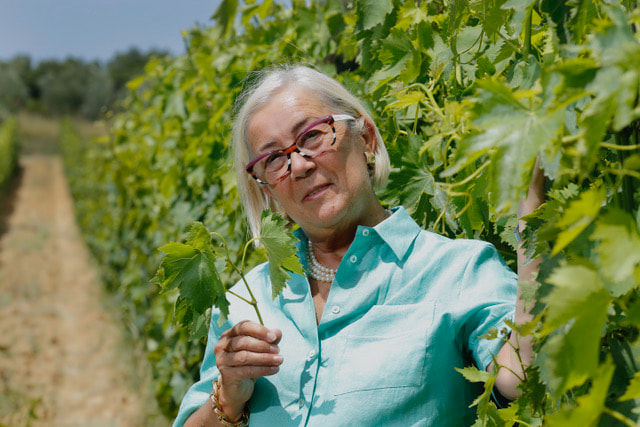
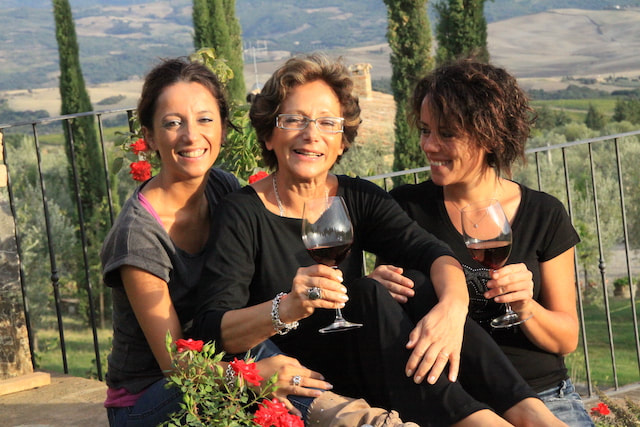
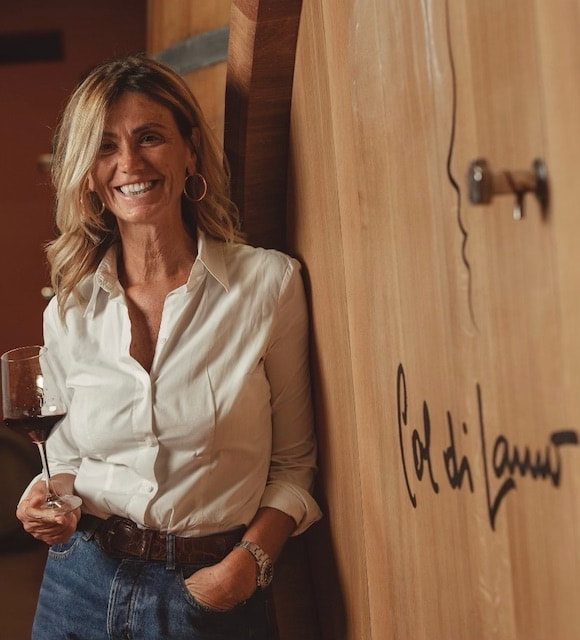
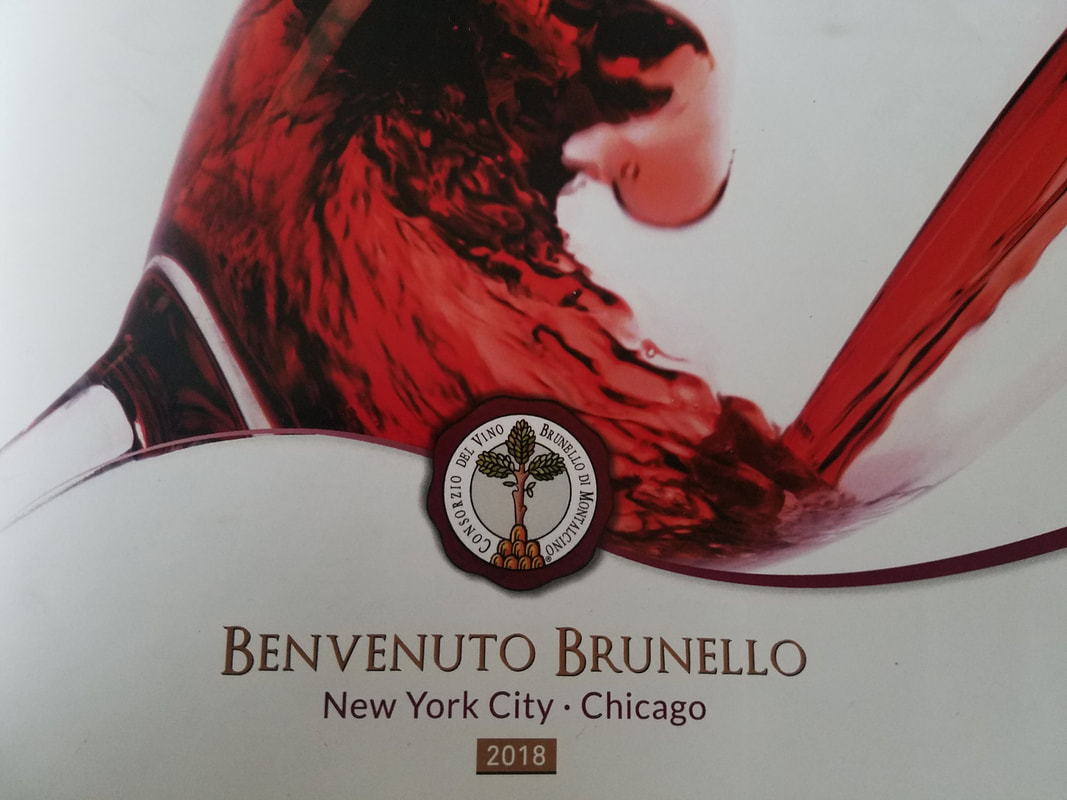
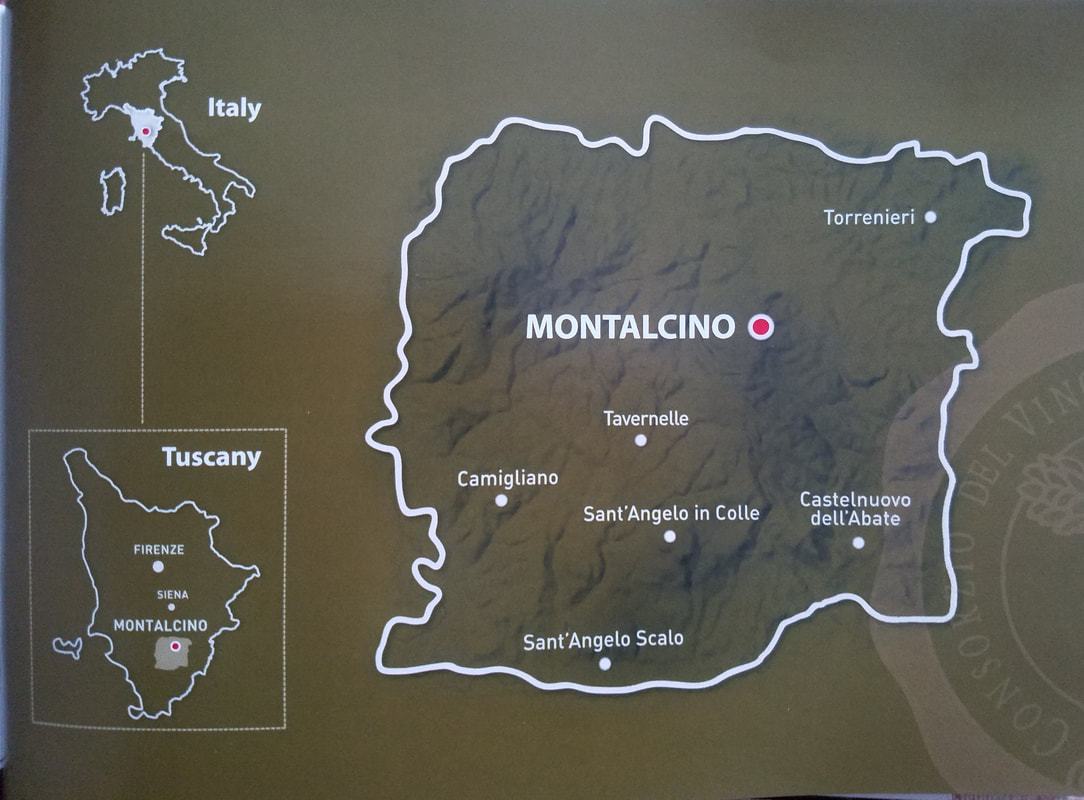
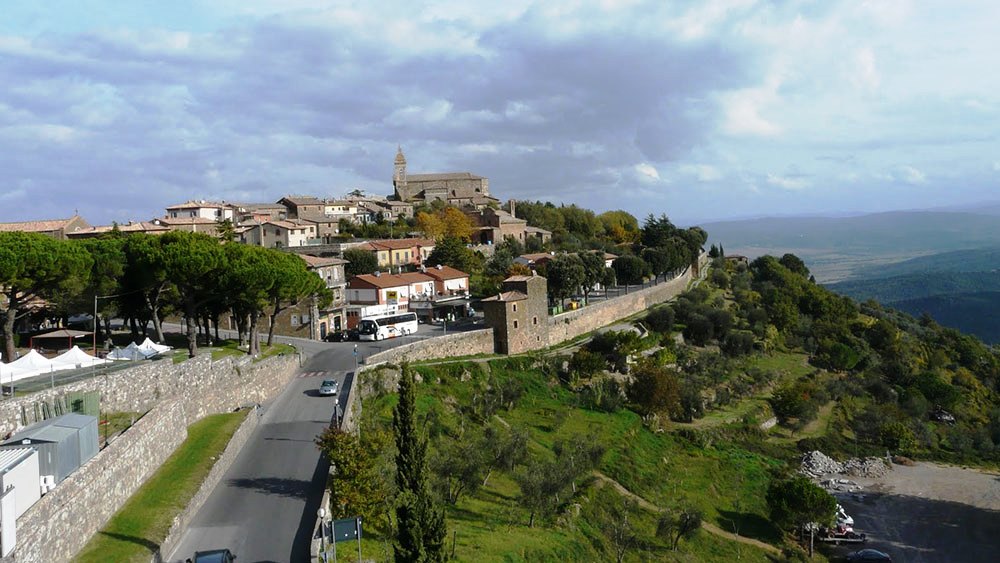
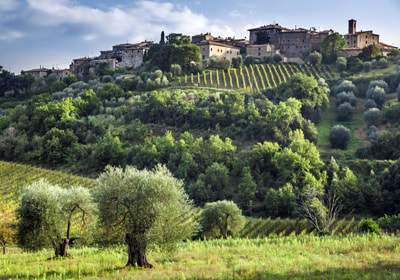
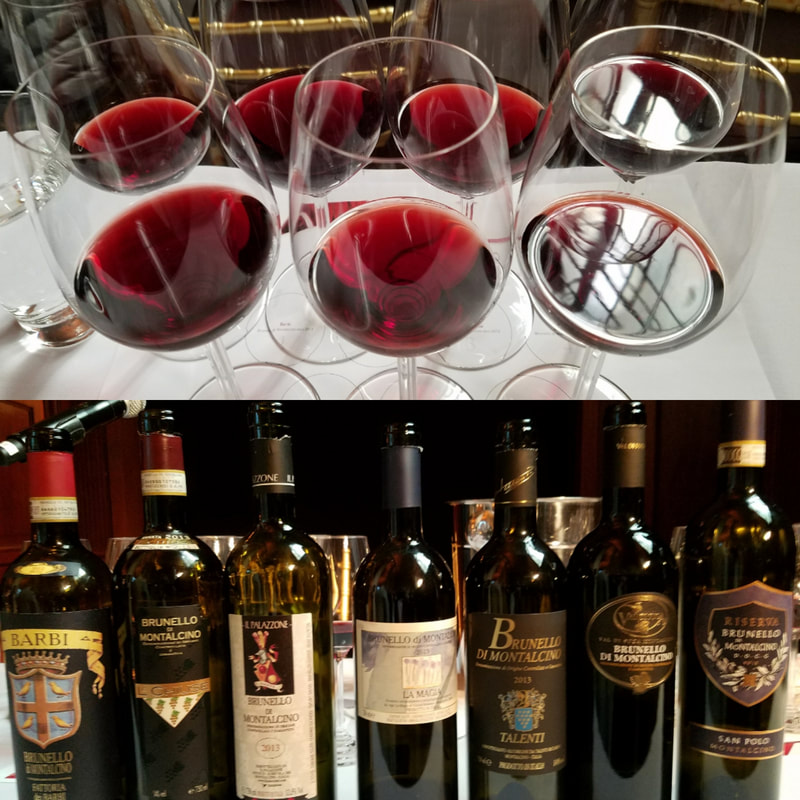
 RSS Feed
RSS Feed